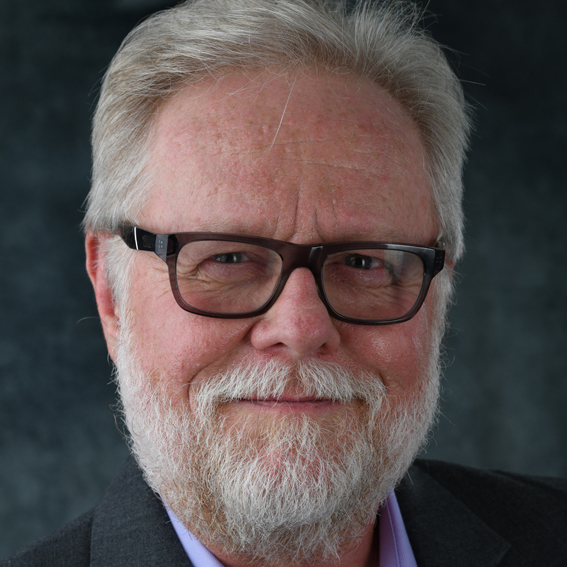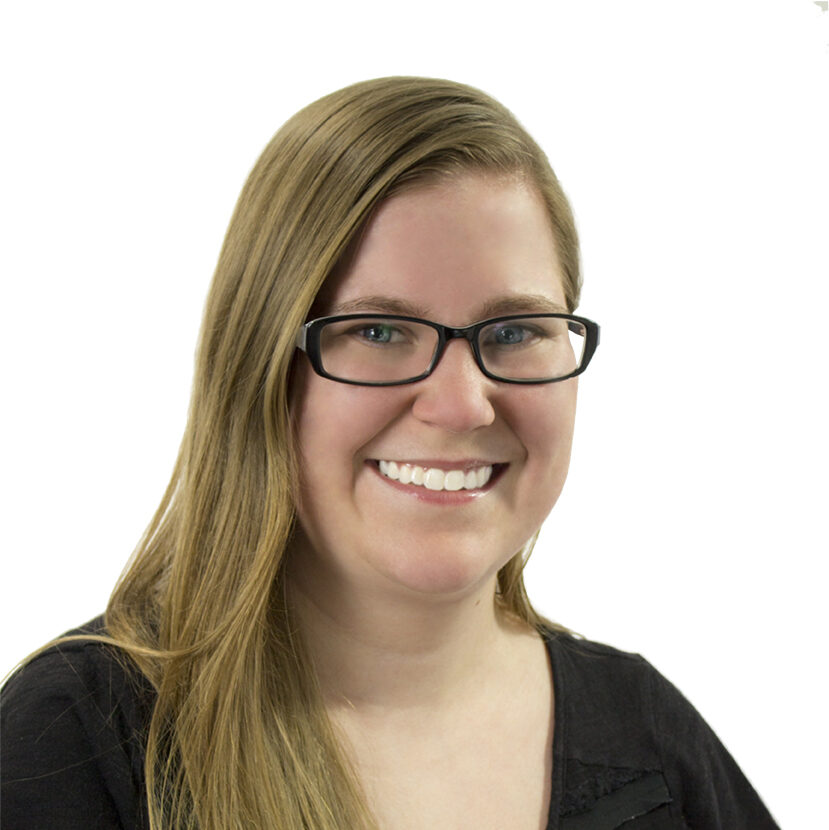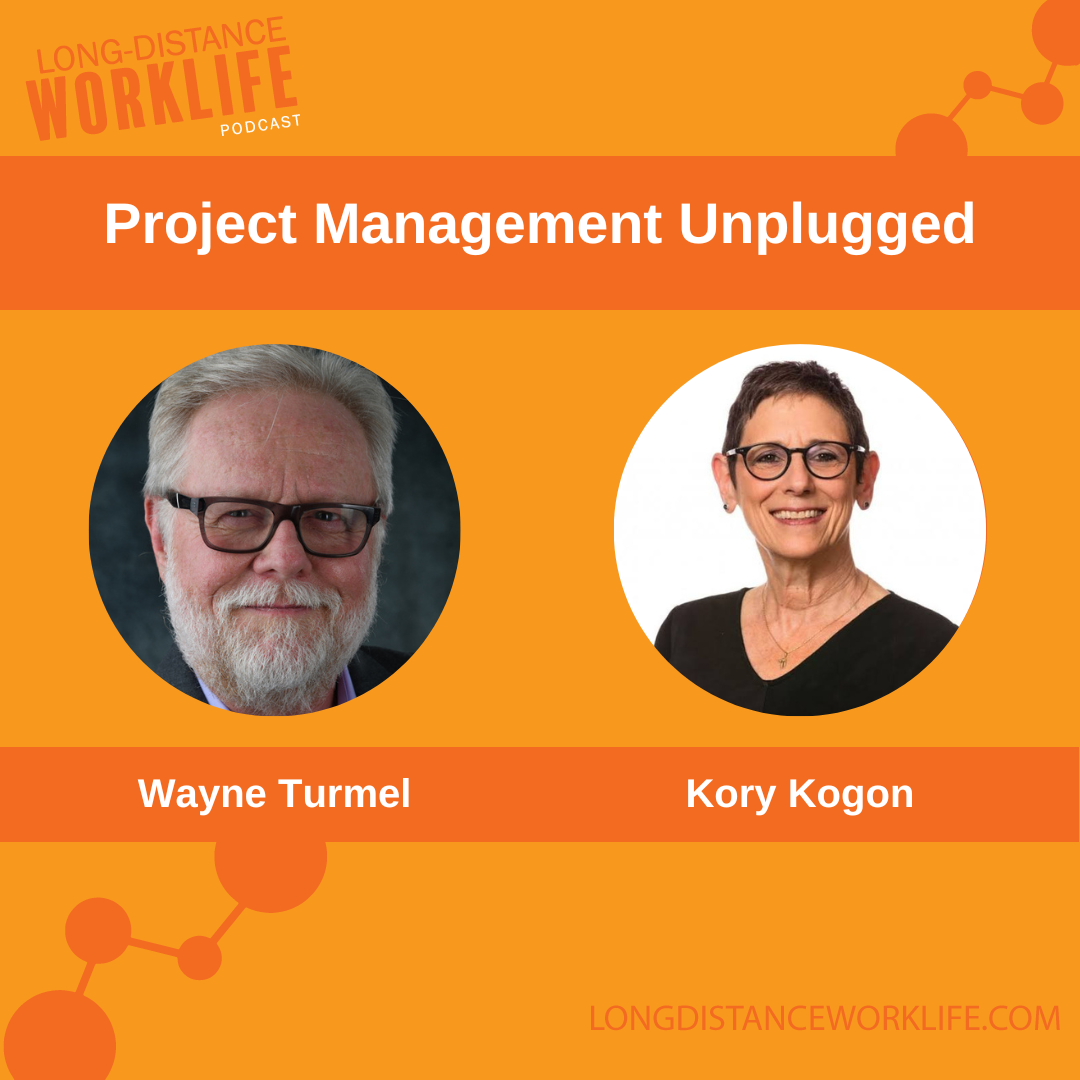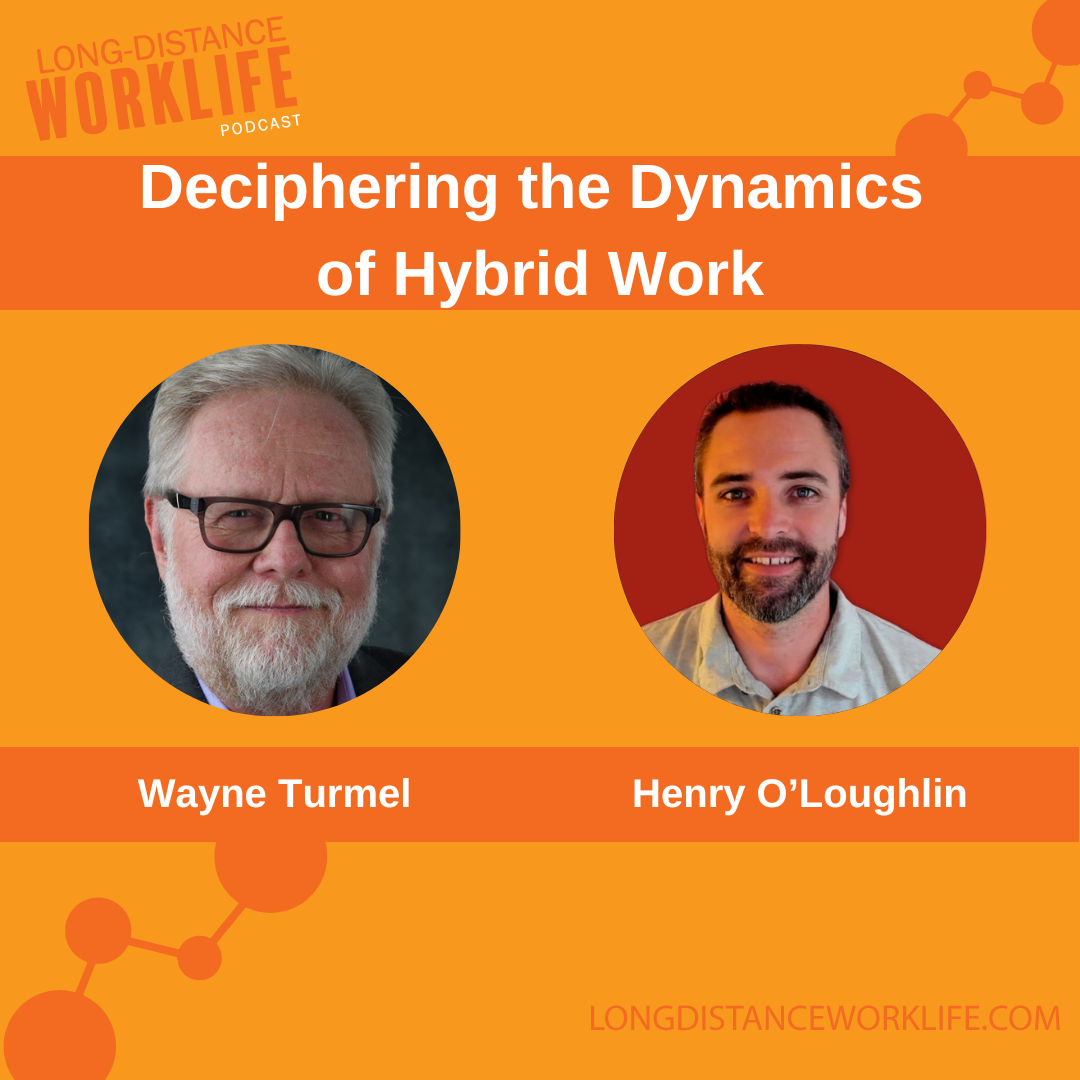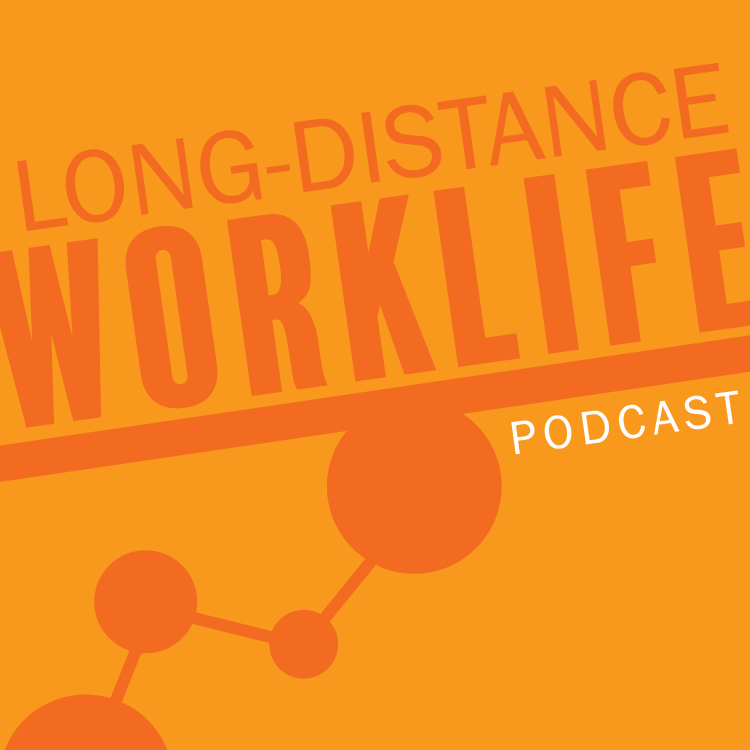Marisa asks Wayne about the difference between remote-first and remote-friendly and what phrases companies should be using depending on their circumstances.
Question of the Week:
What's the difference between 'remote-first' and 'remote-friendly'?
Additional Resources:
- Robinhood announces they're a remote-first company
- Buffer
- Chris Dyer
- Chris Dyer's company, PeopleG2
- Virtual LeaderCon
- A World Without Email by Cal Newport
- Wayne's conversation with Laurel Farrer
- Wayne's conversation with Pilar Ortiz
- Wayne's conversation with Hoyin Cheung
- Learn more about Wayne Turmel
- Learn more about Marisa Eikenberry
- Purchase a copy of The Long-Distance Leader
- Purchase a copy of The Long-Distance Teammate
Transcript
Wayne Turmel: Hi everybody. Welcome to another episode of The Long-Distance Worklife Podcast. I'm Wayne Turmel.
Marisa Eikenberry: I'm Marisa Eikenberry.
Wayne: Yes, she is. And this is the podcast where we look at remote work, technology, leadership, and just trying to survive the way the workplace is changing. And keep the weasels at bay. Welcome. Welcome. Today is a joint Wayne and Marisa one-topic episode. Marisa has chosen the topic. So, Marisa, go ahead, lady.
Marisa: Absolutely. So one of the things I thought that we could talk about and I know we talked about this a little bit before we started recording, but this idea of remote-first versus remote-friendly and maybe some of the other buzzwords that we hear about in this remote world right now. But I know those two specifically, I see all the time and I know there is a difference and we should probably talk about it.
Wayne: Well, we probably should. The first thing to remember is that we track the buzzwords so you don't have to. Dear listener, I have been in this business in the virtual remote work space well over 15 years and listened to the way things change. I remember when we used to telecommute and before that or after that, it was teleworking.
And the government actually has big binders full of telework policy that they then had to go in and do a search and replace because now it's work from home or WFA. And one needs to be very careful with the acronyms when you start using those letters in some combination. So there are a bunch of buzzwords that we should probably tackle.
But let's start with remote-first and remote-friendly. Remote-friendly basically means we're open to the idea of people working remotely. It suggests that there is an office, there is a central location, but we've got people that work elsewhere and we do our best to not make it suck.
Marisa: So in a way, it's almost kind of saying we're a hybrid company, kind of.
Wayne: Well, you're willing to be a hybrid company. Remote-friendly kind of presumes that the default is the office. But we will still love you if you don't come in every day and you work somewhere else. We're going to talk about hybrid, I suspect, in just a minute. Remote-first basically means we are set up as a remote company.
Marisa: So the primary is remote.
Wayne: It's primary remote. We hire people with that notion. We build our systems around that. There may or may not be an office where a couple of people sit, maybe an admin or two, but basically we are a remote company. And where you see that a lot is in engineering and especially I.T., coding, those types of companies.
Marisa: Yeah, I just saw that Robinhood recently advertised it. I say recently it may have been a few months ago but that they are now advertising themselves as a remote-first company.
Wayne: And it's interesting because just for the record, for Canadians, we are talking about the banking app, not about the flower company, Robinhood Flower being very near and dear to my heart.
That's a really good example because there are certain industries. I'm trying to remember, I think it was Bloomberg just did a report on which industries are more likely to have remote work. And if you look at financial services and I.T. services, it's well over 75% of the jobs associated with those tasks could be done remotely.
Marisa: Gotcha.
Wayne: Which is interesting because I.T. companies have embraced it and financial services companies have kind of freaked out and rebelled, even though they have the largest percentage of jobs that theoretically could be done remotely. I mean, as we've said before, if your job is fight traffic, get to the office, hang your coat over the chair, sit at your computer, get up at the end of the day, pick up your coat, get back in the car.
There is a pretty good chance you could do that remote at least part of the time. But that's the difference between remote-friendly and remote-first. Remote-first recruits sets up systems, processes. They assume that everybody's going to be remote. And if you want to come into the office and say hi to people, that's great. But that's not the way that they are built.
Marisa: So I guess as an add-on question, and I know that companies like Buffer are like this, what's the buzzword now for a company who's entirely remote? Or is there a buzzword for it yet?
Wayne: They basically have embraced remote-first.
Marisa: Okay, because I know that companies like Buffer, I think WordPress might be also and have been since way before pandemic even happened, but they were remote only. There is no office to go to. Everybody's remote.
Wayne: Yeah, absolutely. And so they've embraced- This week the word is remote-first.
Marisa: Gotcha. I know I've seen it a lot more lately.
Wayne: If you look at our good friend Chris Dyer, who has been on VLC and will probably be on this show eventually.
Marisa: For those that don't know, VLC is our conference Virtual LeaderCon, which we do once a year and we'll do again in September of this year, 2022.
Wayne: And Chris has built several virtual companies, and they used to be virtual companies. That was the buzzword. Right?
Marisa: Right.
Wayne: And all of a sudden, he started using with his company, and I can't remember the name of it right now, or I would say it. [Chris Dyer's company is PeopleG2.]
Marisa: We'll make sure it's in the show notes. Yeah.
Wayne: Make sure it's on the show notes. Thank you. All of a sudden, you know, he was a we are a remote-first company, so that's the buzzword du jour.
Marisa: Okay. So it's getting companies encompassing both processes, essentially.
Wayne: Yeah. But it's a different mindset.
Marisa: Absolutely.
Wayne: It's a different mindset. It's, you know, as we choose these buzzwords. Right. Telecommute. Presumed that you were kind of somewhere else, but you were coming into the office that there was a central hub.
Marisa: Okay.
Wayne: And that's where the buzzwords can get a little muddled. And the most muddled word at the moment is hybrid.
Marisa: Okay. That makes sense.
Wayne: A hybrid is getting, you know, it's kind of like the Princess Bride. You use that word a lot, but I don't think it means what you think it means. You know, hybrid often gets conflated with blended or flexible work or a bunch of other terms.
Marisa: Right.
Wayne: That basically imply what you had said earlier on. This notion that there is an office and some people are in the office and some people are out of the office. And that's kind of what it means. It usually means that there's some mix of that.
Marisa: Okay.
Wayne: What we need to do, though, I think when we focus on this notion of the office and then others.
Marisa: Mm hmm.
Wayne: It does a couple of disservices and people that are listening to that. Please. You know, we'd love your comments and your questions about that. The challenge is and if you've read A World Without Email by Cal Newport, you know, his thing is the reason we get in trouble with too much email and too many meetings and Zoom Fatigue and all of this stuff is we're trying to recreate the office environment.
Marisa: Right?
Wayne: When we do that, we create constrictions around time. Yeah. I joke that in America, if you live on the West Coast, you better be an early morning person because the sun revolves around the Statue of Liberty and everything is based on East Coast time, no matter where you are. Well, that kind of takes out the flexibility. If you need to be available during East Coast hours.
That's not true flexibility. If you default to the home office in your systems, you know, yes, you can work anywhere you want. But as so many organizations used to say quietly and now places like Morgan Stanley are saying, the quiet parts out loud. Right? If you can't be bothered coming into the office we will continue to hire you.
And you can do good work, but don't expect to be promoted and don't expect to be on the fast track.
Marisa: Which is so unfortunate now that we're getting more and more data all the time about productivity is going up. And some of these people who are working from home and I realize it's not everybody but some people who are working from home are thriving and doing so much more work, so much more engagement than they ever did when they were in the office.
Wayne: Yeah, far be it from me to defend senior leaders ever. That is so not my default position.
Marisa: That's a great place to start.
Wayne: I am at heart a bomb throwing radical who's just found himself with a job title. But the challenge is you can't take something that has made a lot of people really rich and really successful and has entire cities built around it. Mm hmm. And say, Oh, we don't need that anymore and expect everybody to be cool with it.
Marisa: Right.
Wayne: And, you know, you can't just say, "Hi, London and New York, it's been real. But, you know..."
Marisa: Yeah, absolutely.
Wayne: I'm moving to Montana, and here's my IP address. You can't really do that.
Marisa: Right. And that's some of what you talked to Laurel about in the last episode, too.
Wayne: Yeah. This notion that it's all going to be utopian and whatever. And that's the thing about hybrid work is hybrid started out being just this messy blend. And I guess that's what that kind of traditional arrangement is, is a blended approach, a true hybrid. If you if you look at the biologic definition of a hybrid is it's two species that are brought together and they actually create a new species that is capable of breathing among itself and.
Marisa: Doing other things.
Wayne: Doing other things. And so that's the Holy Grail. Now, for companies that want to have a physical presence and want to be remote-friendly.
Marisa: Right.
Wayne: Right. They're not going to be remote-first as long as they're building buildings and investing in infrastructure, physical infrastructure.
Marisa: Right.
Wayne: But there's this new thing that we have to find ways to. For example, right now, we have an overreliance on synchronous communication. The reason that I have to be functional at seven in the morning is because people insist on being online at seven in the morning. And if I'm not there, I'm losing out.
Marisa: Mm hmm.
Wayne: Are there ways to collaborate and meet and share information asynchronous so that the amount of time we actually have to spend connected, talking, holding meetings, doing that kind of thing, it's a different form of workflow. Right. It's a different expectation on how people should work.
Marisa: Absolutely.
Wayne: And it's a brand new thing. And like all hybrids, it hasn't existed before. We may do and some people have said we're going to be remote-friendly. And others have said, well, we're going to do this blended thing and we're going to. And what happens when you blend like that is the default goes to the office, almost always the default right to the office, the systems, the times that you meet.
Marisa: Where the meetings happen.
Wayne: Who gets a promotion where you hold the meetings? When you do get together, where is it?
Marisa: The birthday celebrations.
Wayne: You know, there's cake in the break room. It's a long drive to the break room. So you don't get cake or you don't get to eat cake with everybody else.
Marisa: Mm hmm.
Wayne: And then by the way, the weasels in the office get cake on their birthday, and I don't. And so they, like, you know, mom likes them better than they like me.
Marisa: Absolutely. Almost breeds a feeling of resentment, too.
Wayne: Well, it can. And we actually should do a conversation about that dynamic, right? Yes. Don't actually create something new. What does that? Because there's a whole show and conversation about those potential landmines, but that when we talk about hybrid, we're still trying to define it.
When we eventually define it, it will become a buzzword and then be out of fashion in about a week. And we'll have to find something new because that's the way it is with everything.
Marisa: So given this given this, you know, hybrid, remote-first and all that, and I know that we've talked a little bit about when companies maybe should use certain options, but I guess if companies have not necessarily said which option that they should use yet, what should they be thinking about? As they're trying to create their remote-friendly, remote-first, hybrid, blended, whatever, as they're trying to think through those processes and figuring out, okay, this is the word we're using.
Wayne: Come back to me in a year when The Long-Distance Team comes out and.
Marisa: There we go!
Wayne: We can have this conversation because Kevin and I just finished that book.
Marisa: Love it.
Wayne: Nice plug.
What should they think about? I think it always starts with what is what do we do? What is the job that we do? Right. What are our outpits? Outpits? Outputs. What are the tasks that create those outputs? What are the roles that are necessary to do the tasks that create those outputs? And then once you and I would suggest visually mapping that and then once you've mapped it you start looking at is that a place that needs people co-located or at least synchronous at some time?
Marisa: Okay. That makes sense.
Wayne: And this is not. You mentioned the conversation with Laurel, and we're going to have a link in the show notes to that previous show because I am less rosy about a lot of this and I am less focused on remote-first. Remote-first is great. If you have the kind of company that can do that.
Marisa: Okay.
Wayne: If you have chosen to have a company that can do that, right. There is something to be said about being a small group of people co-located working together in physical proximity. It is not like that is evil and must be destroyed.
Marisa: Absolutely.
Wayne: But it's a choice.
Marisa: Yes.
Wayne: It limits who you recruit. It puts constraints on what you spend money on because you need a location. It it needs to be a conscious decision. And it's not always a wrong one.
Marisa: Right.
Wayne: But that's the thing. What is the. It always starts with what is the work? Form follows function. What's the work that needs to be done? Who needs to do it? Then you get to what do those people do and where do they need to be when they do it?
And that is about all the time we have for what could easily be a three beverage conversation.
Marisa: Before we end, though, I do want to ask you. So you mentioned that you're not as rosy about remote-first, which I'll admit surprises me given, you know, the blog posts that you've done, the books that you've written already, and we'll have links to those in the show notes as well. But why are you not remote-first, are you more remote-friendly then?
Wayne: I am very remote-friendly that that is my default position and I have benefited from everything.
Marisa: Absolutely we both have.
Wayne: Right? The fact that Kevin works in Indianapolis. You work in the office with him at least part of the time.
Marisa: Yes.
Wayne: You have a very flexible working arrangement there. And when I was in Chicago, the dynamic was different. I could pop in the car and in 3 hours be in Indianapolis.
Marisa: Very true.
Wayne: Right. I can no longer do that. Without hopping between COVID and the laws of physics. I have not been in Remarkable House in quite some time.
Marisa: Right.
Wayne: I just think here's why I'm not rosy and the reason I'm not rosy about most things, and it's the reason that I am a grumpy old man is I there has never been any system, product or tool invented by humans that they have not managed to make suck.
Marisa: So engineers out there, challenge for you.
Wayne: It's just that everything can be used for good or used for evil, and it can be thoughtfully applied and maximized or you cannot think about it very hard and take the easy way out and get less than optimal results. And that's just the way human beings operate.
Marisa: That makes sense. And I know that you've had some conversations about similar stuff, not only with me, I think also with Pilar recently too, about this idea that we're implementing these technologies without really having any idea of how to implement them. And so it's backfiring.
Wayne: Well, and time is flying away. And this is another conversation that we should definitely have. And we are actually going to have with some of the people who make the technology. We've done it with a Hoyin Cheung at Remo and some others, so we will continue to do that. Which brings us to we really, really, really need to wrap this up.
Thank you for listening to worklife. Long-Distance Worklife Podcast. Please, if you've enjoyed this like and subscribe and most importantly, tell your friends we will have show notes as well as and this is important a place for you to ask your questions. Marisa is coming up with killer questions and I'm digging these conversations, but we want to know what you want to know.
Marisa: Yeah, I'm not the only one out there that has questions. I know that for sure.
Wayne: So on our show notes page is a place to get questions in queue. Please take advantage of that. You can reach Marisa and I at The Kevin Eikenberry Group. Wayne@KevinEikenberry.com. Marisa@KevinEikenberry.com. That's it. Thank you for listening to the Long-Distance Worklife podcast. We really, really, really need to go. Marisa, thanks as always.
Marisa: Thank you for answering my question today.
Free Video Series!
Join us for a powerful, 4-part video series titled, Demystifying Remote Leadership. You will learn how to create solid working relationships in a virtual team with more confidence and less stress!
